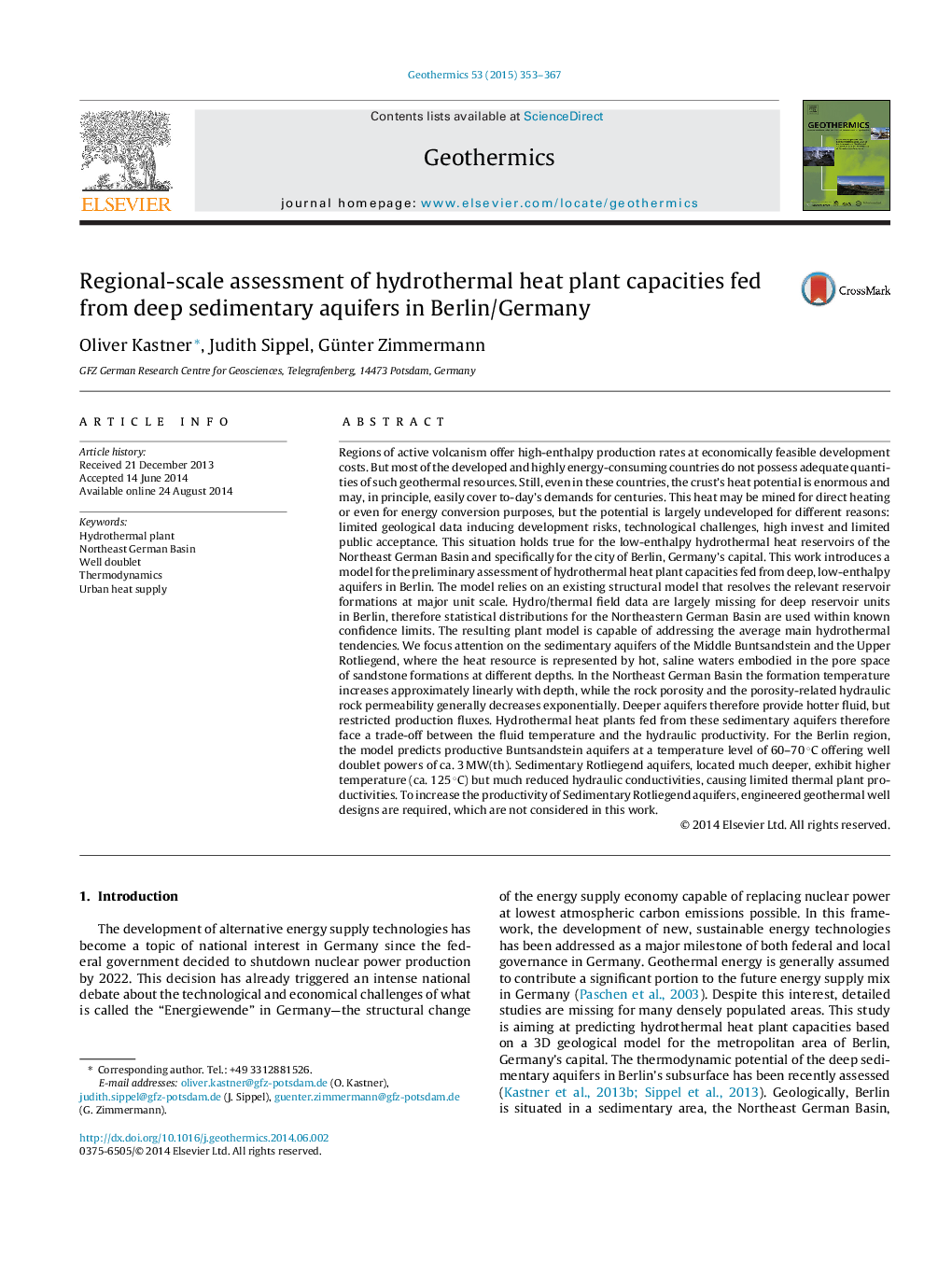| کد مقاله | کد نشریه | سال انتشار | مقاله انگلیسی | نسخه تمام متن |
|---|---|---|---|---|
| 1742274 | 1521915 | 2015 | 15 صفحه PDF | دانلود رایگان |
• Regional-scale structural model statistically derived geoparameters.
• Units considered: Middle Buntsandstein (Triassic) and Sedimentary Rotliegend (Permian).
• Conceptual restriction to simple doublet well design.
• Predictions of hydrothermal plant capacities for Berlin/Germany.
• Resulting plant capacities representing average values.
Regions of active volcanism offer high-enthalpy production rates at economically feasible development costs. But most of the developed and highly energy-consuming countries do not possess adequate quantities of such geothermal resources. Still, even in these countries, the crust's heat potential is enormous and may, in principle, easily cover to-day's demands for centuries. This heat may be mined for direct heating or even for energy conversion purposes, but the potential is largely undeveloped for different reasons: limited geological data inducing development risks, technological challenges, high invest and limited public acceptance. This situation holds true for the low-enthalpy hydrothermal heat reservoirs of the Northeast German Basin and specifically for the city of Berlin, Germany's capital. This work introduces a model for the preliminary assessment of hydrothermal heat plant capacities fed from deep, low-enthalpy aquifers in Berlin. The model relies on an existing structural model that resolves the relevant reservoir formations at major unit scale. Hydro/thermal field data are largely missing for deep reservoir units in Berlin, therefore statistical distributions for the Northeastern German Basin are used within known confidence limits. The resulting plant model is capable of addressing the average main hydrothermal tendencies. We focus attention on the sedimentary aquifers of the Middle Buntsandstein and the Upper Rotliegend, where the heat resource is represented by hot, saline waters embodied in the pore space of sandstone formations at different depths. In the Northeast German Basin the formation temperature increases approximately linearly with depth, while the rock porosity and the porosity-related hydraulic rock permeability generally decreases exponentially. Deeper aquifers therefore provide hotter fluid, but restricted production fluxes. Hydrothermal heat plants fed from these sedimentary aquifers therefore face a trade-off between the fluid temperature and the hydraulic productivity. For the Berlin region, the model predicts productive Buntsandstein aquifers at a temperature level of 60–70 °C offering well doublet powers of ca. 3 MW(th). Sedimentary Rotliegend aquifers, located much deeper, exhibit higher temperature (ca. 125 °C) but much reduced hydraulic conductivities, causing limited thermal plant productivities. To increase the productivity of Sedimentary Rotliegend aquifers, engineered geothermal well designs are required, which are not considered in this work.
Journal: Geothermics - Volume 53, January 2015, Pages 353–367
